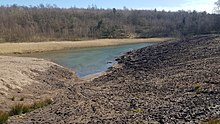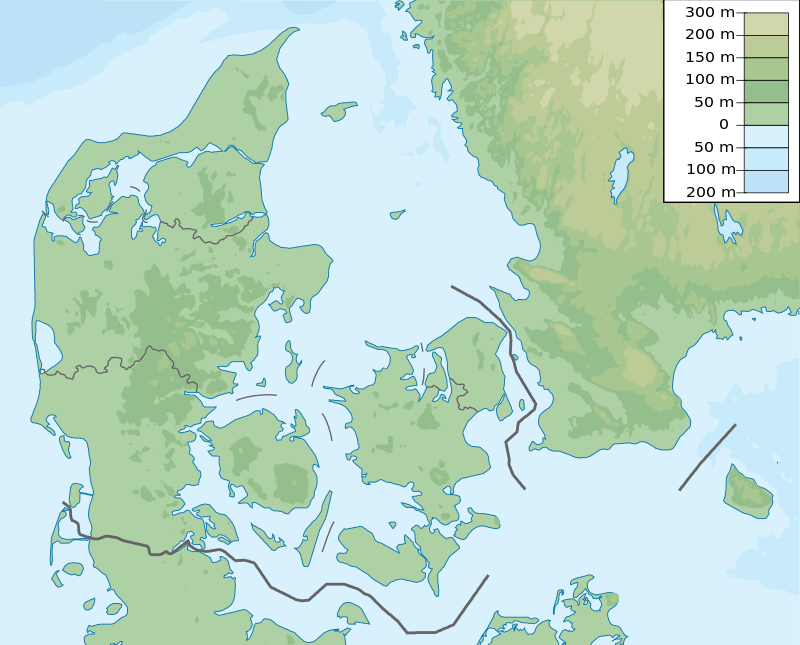Gram Formation
The Gram Formation is a geologic formation in Gram, Denmark. It preserves fossils dating from the Miocene period. The formation is made of three layers: the glauconite-rich, the Gram Clay, and the Gram sand. The sediments in the formation were deposited in an open marine depositional environment known as the Gram Sea.
| Gram Formation Stratigraphic range: Tortonian ~11.6–7.2 Ma | |
|---|---|
 Gram Clay Pit, the prime source of fossils from the Gram Formation | |
| Type | Formation |
| Lithology | |
| Primary | Claystone |
| Location | |
| Coordinates | 55.3°N 9.1°E |
| Approximate paleocoordinates | 55.6°N 8.1°E |
| Region | Jutland |
| Country | |
| Type section | |
| Named for | Gram |
 Gram Formation (Denmark) | |
Fossil content
Many fossils of new species have been discovered in the formation, including those of the beaked-whale Dagonodum mojnum[1] and the mollusk species Pseudocochlespira gramensis,[2] as well specimens of more well-known species such as Carcharodon megalodon.[3]
gollark: ↑
gollark: Not necessarily if you're banned, but in advance.
gollark: You *can* actually download that from Discord.
gollark: But what?
gollark: Oh, Ale's speaking. I didn't notice, since it turns out I actually had him muted.
References
- Ramassamy, Benjamin; Lauridsen, Henrik. "A new specimen of Ziphiidae (Cetacea, Odontoceti) from the late Miocene of Denmark with morphological evidence for suction feeding behaviour". Royal Society Open Science. 6 (10): 191347. doi:10.1098/rsos.191347. PMC 6837206. PMID 31824732 – via royalsocietypublishing.org (Atypon).
- http://natuurtijdschriften.nl/download?type=document&docid=674554
- https://pdfs.semanticscholar.org/b6e4/c05710ce241b12d83754024e1693809ea08d.pdf?_ga=2.148142580.277114551.1595665906-1480583376.1595665906
This article is issued from Wikipedia. The text is licensed under Creative Commons - Attribution - Sharealike. Additional terms may apply for the media files.